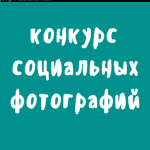Government and Business. Planned Motivations
Next three years the government and the National Bank plan to manage economy of the country in accordance with the new anti-crisis plan developed as per instruction of the Head of State. Unlike others earlier accepted anti-crisis projects, it includes spot support of real sector and creation of infrastructure for agriculture.
 Anti-crisis plan for ensuring economic and social stability for 2016–2018 was prepared taking into consideration risks of market deterioration for export goods of the country and includes two key areas: formation of a new structural economy and prompt anti-crisis measures. In regards of the first of them stabilisation of financial sector, optimisation of budget policy and stimulation of economic competition will be ensured. Within its frameworks the National Bank continues de-dollarisation having maintained the level of floating tenge’s exchange rate and suppressing its sharp fluctuations. In the medium term main task of the regulator and the government is reduction of inflation to 6–8% in 2016–2017, to 5–7% in 2018, 4–6% in 2019 and 3–4% in 2020. In April 2016 mechanism of flexible change of base interest rate, aimed at ensuring stability of prices and inflation rate reduction, will be implemented. It will allow to increase efficiency of monetary policy actions and will strengthen its influence on monetary market rates.
Anti-crisis plan for ensuring economic and social stability for 2016–2018 was prepared taking into consideration risks of market deterioration for export goods of the country and includes two key areas: formation of a new structural economy and prompt anti-crisis measures. In regards of the first of them stabilisation of financial sector, optimisation of budget policy and stimulation of economic competition will be ensured. Within its frameworks the National Bank continues de-dollarisation having maintained the level of floating tenge’s exchange rate and suppressing its sharp fluctuations. In the medium term main task of the regulator and the government is reduction of inflation to 6–8% in 2016–2017, to 5–7% in 2018, 4–6% in 2019 and 3–4% in 2020. In April 2016 mechanism of flexible change of base interest rate, aimed at ensuring stability of prices and inflation rate reduction, will be implemented. It will allow to increase efficiency of monetary policy actions and will strengthen its influence on monetary market rates.
The second area provides for stimulation of economic growth, support of employment and household incomes. For example only for support of small and medium business under the Business Road Map 2020 in 2016 additional funds in the amount of 7 billion tenge will be allocated to the regions for subsiding and securing investment loans. As estimated by the minister of national economy of the Republic of Kazakhstan Yerbolat Dosayev it will allow to attract 202 billion tenge loans to the economy, increase production by more than 418 billion tenge, maintain jobs and create at least 15 thousand new jobs, as well as ensure 50 billion tenge of tax revenues.
In total the plan includes 109 actions many of which are in one way or another are included in other current programs of the government and the National bank. Therefore we will highlight only the most interesting points. Provisionally they can be divided into two parts.
The first one is emergency support of economy by increasing consumption and fighting inflation in the country. In particular, in order to reduce cost of some of domestic goods the plan provides for sport support of real sector of economy. For this in 2016 temporary reduction factors will be applied to electric power and main-line railway services rates. Reduction of cost of electric power and transportation is expected to lead to cheapening of finished goods.
Special attention in the anti-crisis document is given to the agricultural sector. According to the Ministry of National Economy during 2016 main focus in agriculture development will be shifted to creation of infrastructure and implementation of new technologies. Thus, it is planned to implement in Kazakhstan actions of so-called WTO’s “green basket” based on experience of Brasilia and Australia, it envisages support of such spheres as scientific studies, informative and consultative services, veterinary and phytosanitary activities, distribution of market information, crop insurance. Restrictive covenants of the WTO do not cover mechanisms of “green basket”, thereat as the final result it can also positively influence milk yield, harvest and products cost.
In order to increase household incomes and correspondingly consumption it is planned to introduce a new format of targeted social assistance, to change methods of living wage estimation, and to reconsider food basket composition and minimal rates of consumption of items of food. And in order to prevent entrepreneurs from often change of price tags, for 2016–2017 threshold price values are set for all socially important items of food. Entities of trade activity will be liable for administrative responsibility for exceeding these thresholds – penalty amounting to 200 monthly calculation indexes. For repeat violation during one year after an administrative punishment was applied – 400 monthly calculation indexes. How this activity will affect entrepreneurs is a controversial question. At the end of last year, Yevgeniy Gan, president of the Union of Grain Processors and Bakers, claimed that holding bread prices down will lead bakers to bankruptcy. However the Ministry of National Economy thinks that so far there is no such a threat. And if issues will occur some changes in the legislation can be introduced.
In regards of attraction of external investments under the anti-crisis plan a joint investment program for transfer of production operations from China to Kazakhstan will be prepared. The key aspect of its implementation is its correlation with the Nurly Zhol State Program for Infrastructure Development for 2015–2019.
An important step for attraction of new sources of investments will be the Road Map for Implementation of Public-Private Partnership (PPP) projects. The document will consist of methodological and practical parts. The first one involves development of standard documentation for small-yield projects, including kindergartens, clinics, boiler houses, bus stations. It is expected to allow to regions to start preparation of PPP projects independently with minimal time losses. As for the practical part of the Road Map, it will include development of benchmarks for reducing shortage of entities in education, health care, municipal housing economy and preparation of pilot project in motor road industry.
Economical Support
We remind that it is not for the first time that the authorities support the economy by special anti-crisis measures. For example, November 6, 2007 the government adopted the Plan of Top-Priority Actions to ensure stability of social and economic development of the Republic of Kazakhstan. For its implementation about 550 billion tenge was allocated from the government budget. The funds were spent for completing shared-equity housing construction, supporting small and medium business, developing the agro-industrial complex and ensuring food security. 184.7 billion tenge was provided through banks to real-estate developers, about 155 billion tenge to small and medium business, 135 billion tenge to agricultural enterprises. In 2008 the Plan of Joint Actions of the government, the National Bank and the Agency on Regulation and Supervision of Financial Market concerning stabilisation of the economy and the financial system for 2009–2010 was adopted. For its financing $10 billion (at that point of time about 1,200 billion tenge) from the National Fund were spend. They included 480 billion tenge spent for stabilisation of financial sector, 360 billion tenge for development of housing, 120 billion tenge for support of small and medium business, 120 billion tenge for support of agro-industry, 120 billion tenge for implementation of innovative, industrial and infrastructural projects. Moreover, during the meeting of the government on March 6, 2009 the Action Plan of the government (Road Map) for 2009 was approved, for its implementation 191 billion tenge was allocated, including 140 billion tenge from the republican budget and 51 billion tenge from local budgets.
Who will Pay for the Anti-Crisis “Banquet”?
The fact that Kazakhstan intends to fight the crisis by using pension money and exchange gain from the carried out devaluation among other means, the president Nursultan Nazarbayev announced during the enlarged session of the government held on February 10 this year. Having emphasised necessity of paying special attention to further diversification of economy through state industrialization programs and Nurly Zhol, as well as through implementation of priority projects of agro-industrial complex and support of small and medium business, he listed specific areas, amounts and sources of financing
Except for funds of the National Fund, the Unified Saving Pension Fund and the reserves of the government, Kazakhstan’s authorities expect to have a support from international financial institutions (IFI). Thus, according to the Ministry of National Economy for completing works at the Astana – Pavlodar motor road 52 billion tenge of government secured loans will be raised in 2016 and 153.1 billion tenge in 2017–2018. In order to increase lending to small and medium business in 2016 lines of credit from the World bank, the Asian Development Bank and the European Bank of Reconstruction and Development in the amount of 65 billion tenge will be raised.
Some industrial projects of the State Program for Industrial and Innovative Development will also be implemented thanks to borrowing. For example, 10 billion tenge government secured loans will be used to continue works on 500 kV overhead line Shulbinsk hydroelectric power plant – Aktogay – Taldykorgan – Almaty. For implementation of the “Integrated Gas and Chemical Complex, phase 1” project in 2016–2018 556.7 billion tenge of secured loans will be raised.
Despite external shocks situation in social sphere remains rather stable: during 11 months of the previous year nominal population income increased by 7.6%, and real one by 1.5%. Thereat average monthly nominal wage is 126.5 thousand tenge, it increased by 5% in nominal terms and decreased by 1.5% in real terms. Unemployment rate is 5%.
Due to reduction of internal demand and reduction of oil and metal prices external turnover of Kazakhstan for 11 months of the year 2015 reduced by 36.8% and amounted to $70.6 billion, including export reduction by 42.4% (to $42.8 billion), and import reduction by 25.7% (to $27.9 billion). Consequently, export surplus reduced by 40.6% – to $14.9 billon. International reserves of the country as of January 1, 2016 amounted to $91.6 billion, having reduced by 10.6%, including reduction of assets of the National Fund by 13.3% (to $63.5 billion) and reduction of gold-value assets of the National Bank by 3.9% (to $28.1 billion).
It remains to be added that the anti-crisis plan shall ensure economic and social stability in the country for the next three years. Meanwhile based on forecasts of the World Bank during that time growth rate of our economy will remain low. Weak internal demand will limit growth in industry and services. GDP growth in 2016 will be 1.1%, and in 2017–2018 it will be 3.3% and 3.4% correspondingly. Analytics of the World Bank believe that start of oil production at the Kashagan offshore field, stabilization of oil prices and recovery of Russia’s economy can affect positively the economy of Kazakhstan.
Rimma Ivakhnikova










